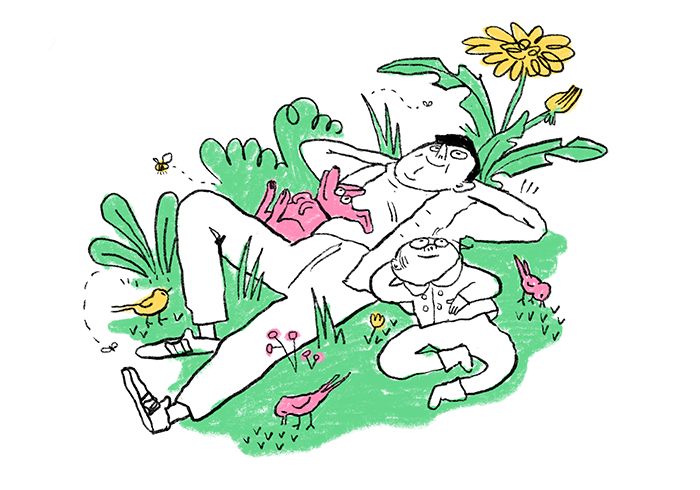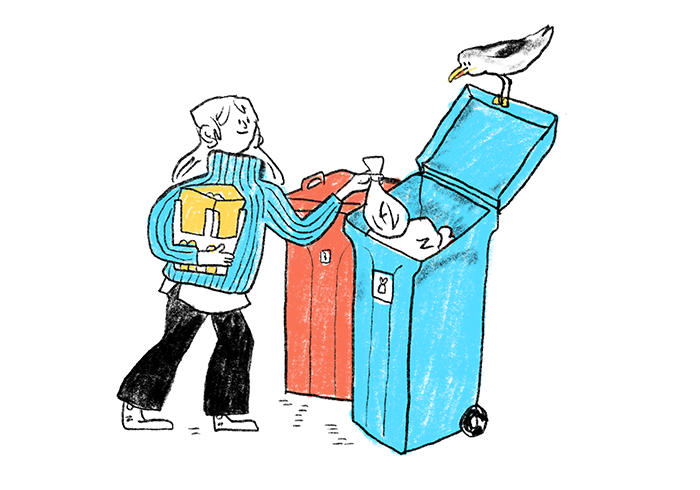Green initiatives

The neighborhood plan emphasizes the protection of vegetation and the bolstering of open spaces in the neighborhoods. Neighborhood gardens, playgrounds, and quiet areas are defined in all districts to encourage outdoor activities and improve public health. Consideration is also given to sorting of waste and effort made to reduce noise and air pollution within residential areas.
Quality public spaces strengthen community awareness and support sustainable travel behavior.
Open spaces
Access to open and green spaces varies by district, although they are within all districts they have varying size and each has its character. The neighborhood plan emphasizes that new construction is primarily planned in areas where development has already been provided for in the Municipal Plan or in areas that are poorly used for outdoor activities, such as along heavily-trafficked roads. This way, open spaces and their qualities can be preserved even if the urban density is high.
Public spaces in the city are important for the welfare and public health of residents. Open spaces (or green spaces) are public parks and rest and play areas where city residents spend time doing outdoor activities, games, and outdoor relaxation. In the neighborhood plan, open spaces within the neighborhoods are firmly established and their roles and uses are more specifically defined.
Public parks
The largest public parks within Reykjavík are so-called city parks which are usually not part of the neighborhood plan but have their own land-use plan. They are Laugardalur, Elliðaárdalur, Fossvogsdalur, and Öskjuhlíð, in addition to Grafarvogur and Úlfarsárdalur. Other public parks are neighborhood parks which can be of all sizes and types. Parks and vegetation are important for the welfare and public health of residents but no less for the divers wildlife within the city limits.
Quiet areas
Noise pollution is a serious health-damaging factor in cities around the world, and exposure to calm areas can have beneficial effects on the physical and mental well-being of residents. The neighborhood plan emphasizes the identification of special quiet areas in all neighborhoods, where there should be shelters from noise pollution and other stimuli. Quiet spaces exist within open and green areas of the city. Their nature can vary, from untouched natural spaces to more organized areas specifically designed and furnished for rest and relaxation. It's vitally important that the environment, setting, and conditions are peaceful, attractive, and calming.
Play and rest areas
Reykjavík has many playgrounds and other green areas where residents can gather or relax. Prominent features include benches and tables, and other infrastructure inviting people to pause, gather and relax. These spaces are often referred to as rest areas in city planning. Play and rest areas can be within city and neighborhood parks but are often also in other smaller green areas within the neighborhoods.
Blue-green surface water solutions
Neighborhood planning provisions mandate an emphasis on Sustainable Drainage Systems (SuDS) on plots and municipal land. SuDS aim to keep precipitation in a natural cycle as much as possible, rather than leading it into drains and from there into the sea.
In short, SuDS emphasize that water has the smoothest path through the surface and is filtered through the soil which cleans it and breaks down many pollutants. Vegetation can absorb and use a significant amount of rainwater, and therefore SuDS bring additional environmental benefits. At the same time, there is less risk of flooding when drainage pipes cannot carry the water volume and that runoff, undesirable substances or polluted water are discharged into the sea.
Urban farming
The provisions of the neighborhood plan grant authorization for urban farming on plots and often on municipal land. Guidelines for urban farming have also been published that can help residents take the first steps and give ideas.
Urban farming refers to the cultivation of foods such as vegetables, and herbs, and also chicken keeping within urban areas. Urban farming can provide many benefits for residents, including promoting outdoor activities and public health, strengthening community ties, and producing healthy, nutritious food.
Waste and sorting
Neighborhood planning provisions on waste management aim to make it easier for residents to increase waste sorting at home and to neatly arrange of waste containers on the property. Thus, it may be permissible to create an enclosure or shelter on the property or even underground containers on larger multi-family residence plots. Remember to follow the City's issued design guidelines for waste solutions.

EV charging spots
To facilitate energy transition in transportation, the neighborhood plan allows setting up charging equipment at parking spaces, both within properties and on municipal land. It is also foreseen to consider setting up public charging stations centrally located in neighborhoods, for instance, in connection with city street redesign and near neighborhood centers.
